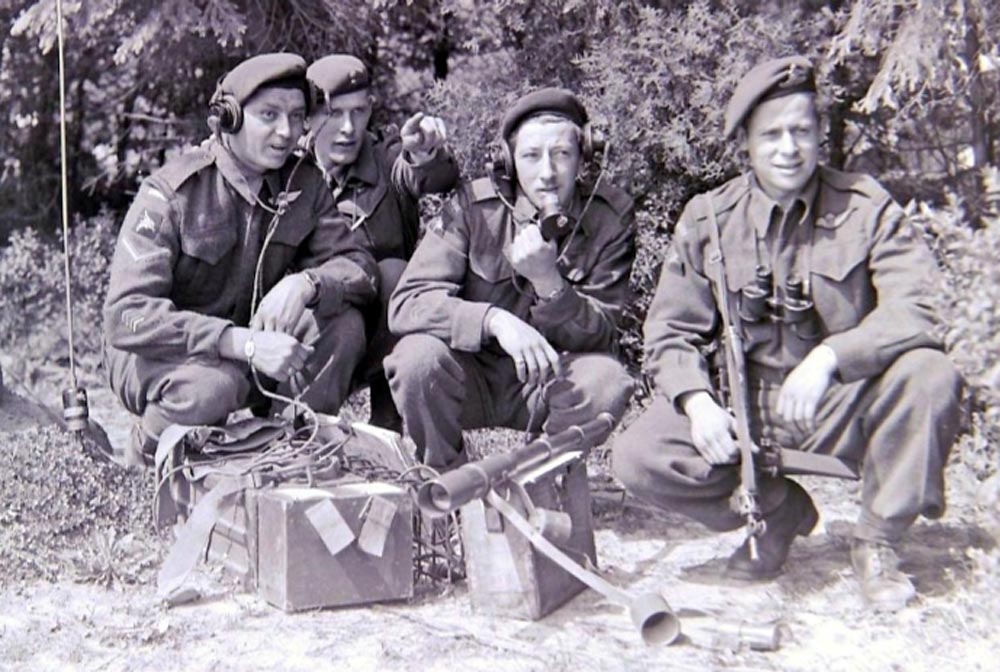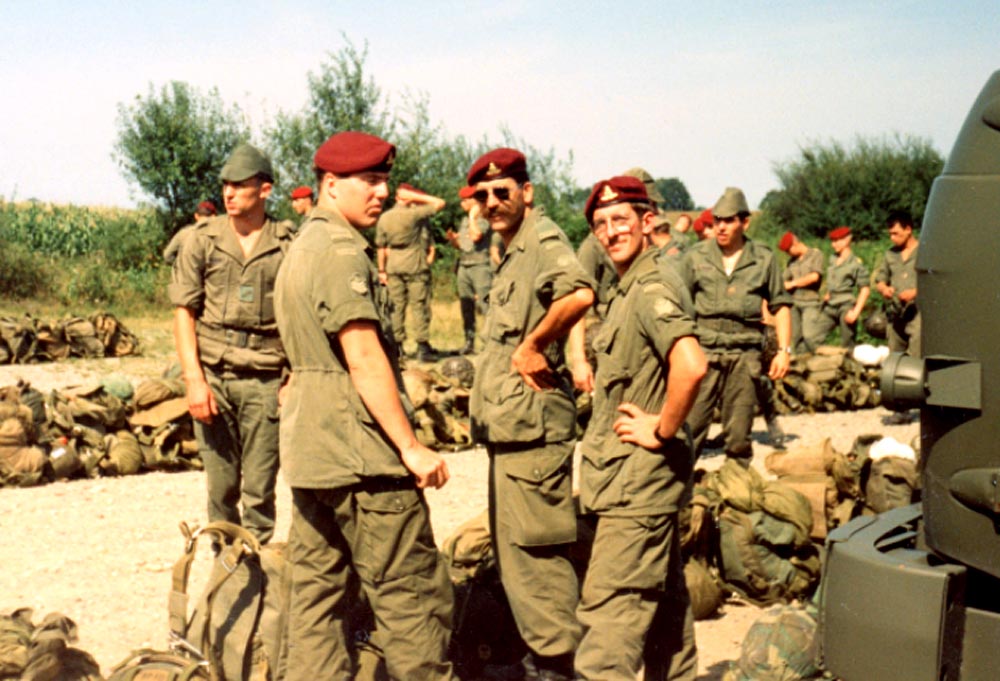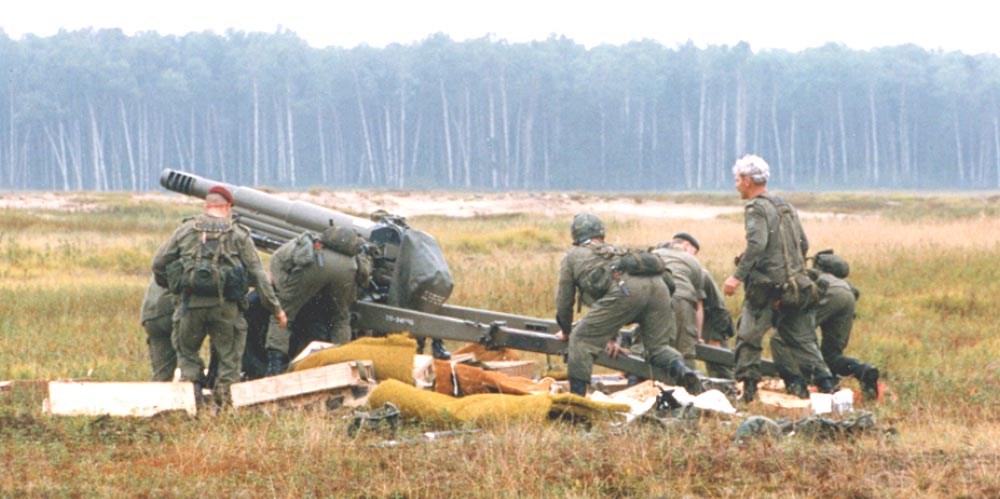
Gunners from 2 Forward Observation Unit pose with their equipment in May 1945.
E Battery (Para) troops in September 1993.
Bringing L5 Howitzer into action after a last drop on Sept. 3, 1993. Photos RCA Museum archives

Andrew Oakden
Stag Special
Canada first went airborne with the 1st Canadian Parachute Battalion and the First Special Services Forces in non-artillery roles in July 1942.
These soldiers served in significant Second World War campaigns, including the D-Day Landing.
In June 1944, Canadian Gunners assumed artillery roles with 1, 2 and 3 Forward Observation Units in the British Airborne Division. Their primary purpose was to direct ground artillery fire and assist with counter-mortar operations.
In 1947, Canada created the Special Air Service Company with parachute units. During the next two decade, they reorganized the units, renaming them Mobile Strike Force and later, Defence of Canada Force.
On July 26, 1949, Canada formed its first airborne battery with 1RCHA at CFB Shilo, called B Light Battery. In July 1950, it was renamed 1st Light Battery (Para), then later renamed Z Battery (Para). From 1949 to 1956, the battery provided airborne support and deployed with 4.2-inc mortars and 75mm Pack Howitzers.
In 1968, the Canadian Armed Forces (CAF) created the Airborne Regiment, with the members stationed at Garrison Edmonton, Alberta. These military members represented Canada’s rapid reaction force, an independent brigade composed of two infantry commandos, one artillery battery and other support units.
The artillery battery served at Garrison Edmonton from 1968 to 1977, with 80 military members operating 105mm L5 Howitzers and 81mm mortars.
In 1977, the Canadian Airborne moved to Ontario to established themselves at Garrison Petawawa. E Battery (Para) with 2RCHA became the artillery component.
Canada deployed the Airborne Regiment during the 1970 October Crisis and the Turkish invasion of Cyprus in 1974. The invasion killed two Airborne troops, and wounded 30. They completed two tour of Cyprus until 1986.
The Canadian Airborne then deployed to Western Sahara in 1991 and Somalia in 1993.
In Somalia, two Airborne soldiers killed a Somali teenager, leading to the disbanding of E Battery (Para) in 1993, and the Airborne Regiment in 1995.
To this day, Canada maintains an airborne component in Regular Force units.


